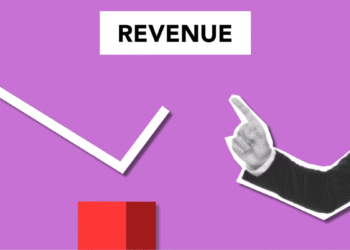There was a time when I had no idea where my sales were coming from.
I’d post on Instagram, send emails, maybe run a little ad and hope something worked. Spoiler: that’s not a strategy.
It wasn’t until I started using UTM tracking that I finally saw which campaigns were driving traffic and which ones were just noise.
What the Heck Is UTM Tracking?
UTM stands for “Urchin Tracking Module” — weird name, super useful.
Basically, it’s a string of tags you add to your URLs (like ?utm_source=email&utm_campaign=spring2024) so that Google Analytics (or any tracking tool) knows exactly where the traffic came from.
Let’s say you’re running a spring promo. You share the link:
-
In your newsletter
-
On Facebook
-
And in your Instagram bio
Without UTMs, all that traffic looks the same. But with UTMs, you’ll know exactly which one drove the most clicks and sales.
If you’ve never set this up before, here’s a great walkthrough on setting up Google Analytics for Payhip to track every click.
Why UTM Tracking Is a Game-Changer?
I used to throw out promo codes and hope they worked. Now? I track performance like a hawk — because UTMs give me the full picture.
Here’s what they let me do:
-
Compare platforms: Instagram vs. TikTok vs. email
-
Measure campaigns: Spring launch vs. Black Friday
-
Test link placement: Email header vs. footer
-
See ROI clearly: “Ah, 80% of these sales came from one email”
UTMs give me proof — and that proof guides every marketing decision I make now.
And if you’re using discounts, this pairs perfectly with tracking coupon code performance step by step to see how effective each campaign really is.
Real Ways I Use UTMs
1. Email Campaigns
Every CTA button in my emails has a UTM. I track:
-
utm_source=email -
utm_medium=newsletter -
utm_campaign=spring_sale
Now I can see which email drove sales and which didn’t. This helped me understand how to optimize ad campaigns using analytics based on actual click data, not just assumptions.
2. Social Posts
Instead of saying “link in bio,” I use:
-
utm_source=instagram -
utm_campaign=ebook_launch -
utm_medium=social
Then, inside Google Analytics, I can see how many actual clicks came from IG. For even more clarity, I combine this with techniques for measuring social media traffic to your store.
3. Affiliate Links
Each affiliate gets a unique campaign ID, like:utm_source=affiliate&utm_campaign=johnslist
Easy to track. Easy to reward fairly. And it complements what I learned from this guide on how to track affiliate sales with analytics.
How I Build My UTM Links? (Fast)
I use Google’s Campaign URL Builder — copy, paste, done.
You enter:
-
Website URL
-
Source (where traffic comes from)
-
Medium (type of traffic: email, social, cpc)
-
Campaign (the name of your promo or event)
Want cleaner links? I shorten them with Bit.ly so they’re not a mile long.
Mistakes I Made (So You Don’t Have To)
-
Inconsistent naming: “facebook” vs. “Facebook” = 2 different sources
-
Too many parameters: Keep it simple — 3–4 is plenty
-
Forgetting to tag email links: Biggest missed opportunity
-
Using UTMs on internal links: Don’t — it messes with attribution
-
No documentation: I now keep a simple UTM tracker spreadsheet
It’s easy to go from “organized” to “chaos” if you’re not consistent.
What I See Inside Analytics
In GA4, I go to:
Reports → Acquisition → Traffic Acquisition
Then I filter by:
-
Session source/medium
-
Campaign name
-
Landing page + source
Now I know what’s working and what’s just noise.
Final Thoughts
If you’re running any kind of online marketing — email, social, ads, partnerships — UTM tracking is your best friend.
It’s simple. It’s free. And it tells you exactly what’s bringing in results.
So the next time someone asks, “Did that campaign work?”
You’ll say, “Yup and here’s the proof.”








